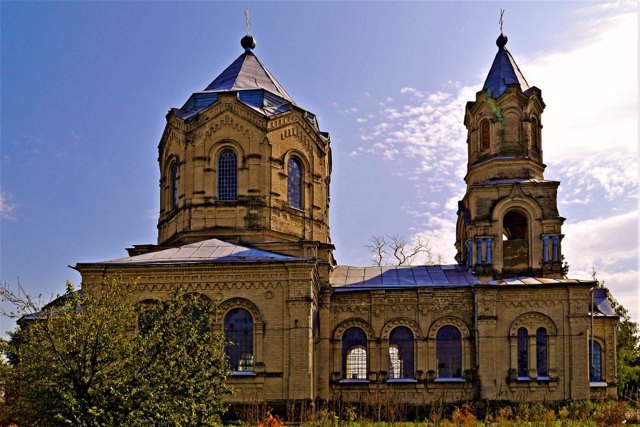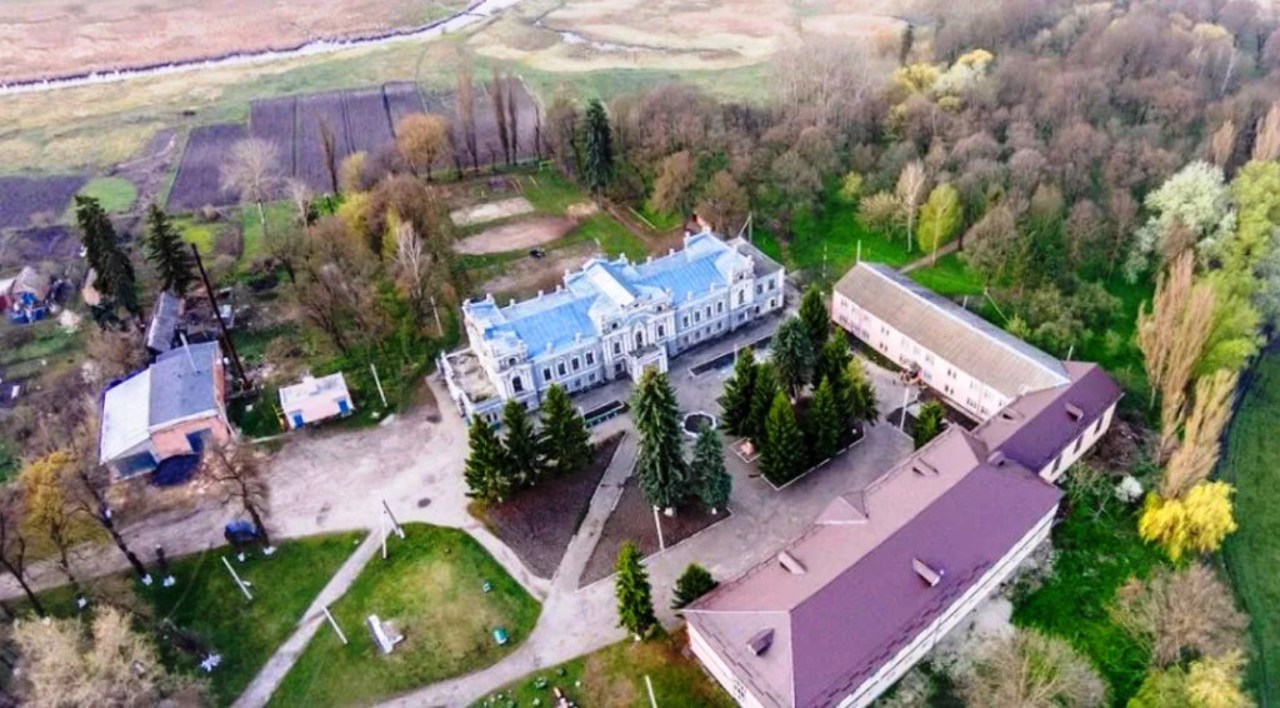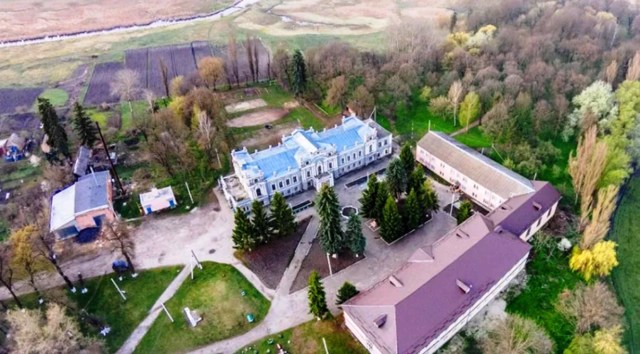Functional temporarily unavailable
Stara Pryluka
Travel guide online Stara Pryluka
General information about Stara Pryluka
The village Stara Pryluka is one of the oldest settlements in the Vinnytsia region. It is located on the banks of the Desna River, 30 kilometers northeast of Vinnytsia. Administratively, it is part of the Turbiv hromada of the Vinnytsia district of the Vinnytsia region.
The city of Pryluka (Pryluk) is first mentioned in the Lavrentiivska Chronicle in 1146, when it was captured by the Galician prince Volodymyr. At that time, it was probably one of the fortified cities of the Bolokhiv land. The name is obviously associated with its location on a steep bend (luka) of the Desn ...
The village Stara Pryluka is one of the oldest settlements in the Vinnytsia region. It is located on the banks of the Desna River, 30 kilometers northeast of Vinnytsia. Administratively, it is part of the Turbiv hromada of the Vinnytsia district of the Vinnytsia region.
The city of Pryluka (Pryluk) is first mentioned in the Lavrentiivska Chronicle in 1146, when it was captured by the Galician prince Volodymyr. At that time, it was probably one of the fortified cities of the Bolokhiv land. The name is obviously associated with its location on a steep bend (luka) of the Desna River.
To protect the Bratslav region from Tatar raids, the voivode Janusz Zbaraski built a defensive castle in Pryluka at the end of the 16th century, the ramparts of which have survived to this day in the territory of the village park. During the War of Liberation under the leadership of Bohdan Khmelnytsky, Pryluk was the center of the Cossack hundred of the Kalnytsia Regiment.
From the middle of the 18th century, Pryluka became the residence of the magnate Borzęcki family. Aleksandr Borzęcki built a two-story palace in Pryluka in the neo-Baroque style and laid out a park. His daughter, Honorata Borzęcka, built the church of St. Anne in 1805 (not preserved). In 1819, the Transfiguration Church was built.
At the beginning of the 19th century, Pryluka was divided into Stara (Old) and Nova (New). Stara Pryluka became the center of the volost. The last owner of the estate was the sugar manufacturer, Minister of Trade and Industry of the UNR, Serhii Merinh.
Село Стара Прилука є одним із найдавніших населених пунктів Вінниччини. Розташоване на березі річки Десна за 30 кілометрів на північний схід від Вінниці. Адміністративно входить до складу Турбівської громади Вінницького району Вінницької області.
Вперше місто Прилука (Прилук) згадується в Лаврентіївському літописі 1146 року, коли його захопив галицький князь Володимир. Тоді це, ймовірно, було одне з укріплених міст Болохівської землі. Назва очевидно пов'язана з розташуванням на крутому вигини (луці) річки Десна.
Для захисту Брацлавщини від набігів татар воєвода Я ...
Село Стара Прилука є одним із найдавніших населених пунктів Вінниччини. Розташоване на березі річки Десна за 30 кілометрів на північний схід від Вінниці. Адміністративно входить до складу Турбівської громади Вінницького району Вінницької області.
Вперше місто Прилука (Прилук) згадується в Лаврентіївському літописі 1146 року, коли його захопив галицький князь Володимир. Тоді це, ймовірно, було одне з укріплених міст Болохівської землі. Назва очевидно пов'язана з розташуванням на крутому вигини (луці) річки Десна.
Для захисту Брацлавщини від набігів татар воєвода Януш Збаразький наприкінці XVI століття збудував у Прилуці оборонний замок, вали якого збереглися до нашого часу на території сільського парку. У роки Визвольної війни під проводом Богдана Хмельницького Прилука була центром козацької сотні Кальницького полку.
З середини XVIII століття Прилука стала резиденцією магнатського роду Божецьких. Олександр Божецький збудував в Прилуках двоповерховий палац в необароковому стилі та заклав парк. Його донька Гонората Божецька в 1805 році спорудила костел Святої Анни (не зберігся). В 1819 році була побудована Преображенська церква.
На початку XIX століття Прилука була поділена на Стару та Нову. Стара Прилука стала центром волості. Останнім власником маєтку був цукрозаводчик, міністр торгівлі й промисловості УНР Сергій Мерінг.
Сплануй своє перебування у Stara Pryluka
What to see and where to go in Stara Pryluka
Tourist attractions and museums of Stara Pryluka

Merinh Palace
Palace / manor , Architecture
The palace in Stara Pryluka was built at the end of the 18th century by the Polish magnate Aleksandr Borzęcki. He also laid out a landscape park on the site of an ancient Rus hillfort and the old Pryluka castle of the 16th-17th centuries (the earthen ramparts have been preserved).
The building was rebuilt several times, the last time - in 1906, under Serhii Merinh, the son of the famous Kyiv doctor and entrepreneur Fedir Merinh. It was then that it acquired its current neo-baroque appearance.
The building is very reminiscent of the Mariyinskyi Palace in Kyiv. Some rooms, including the lobby, are decorated in a Moorish style reminiscent of the Spanish Alhambra Palace. The majolica decoration of the ceilings and walls in the lobby has been preserved. Some rooms have preserved mahogany ceilings.
Currently, the premises of the Merinh palace are partially used by a boarding school.
Nearby is the Church of the Intercession (1910).

Intercession Church
Temple , Architecture
The stone Intercession Church in Stara Pryluka was built in 1910 by engineer Rikhard Kraus, as evidenced by a plaque built into the stairs.
The ancient paintings have not been preserved, but the height of the bath is still impressive - about 20 meters.
In the 1960s, the church was closed, but in 1990, with the help of the village council, it became active again.
On January 1, 2023, the first Divine Service of the Orthodox Church of Ukraine was held in the Intercession Church.
Reviews Stara Pryluka
Geographical information about Stara Pryluka
| {{itemKey}} | {{itemValue}} |
|---|---|
| Region |
Vinnytsia |




